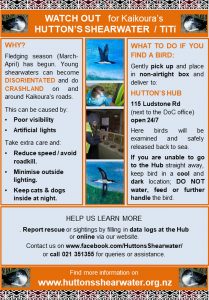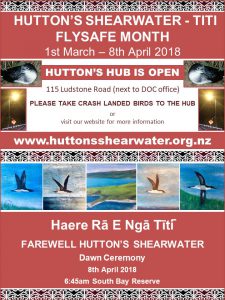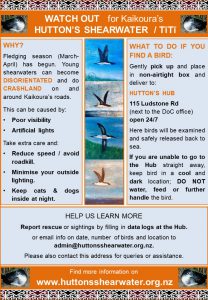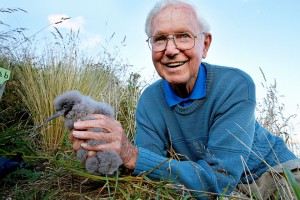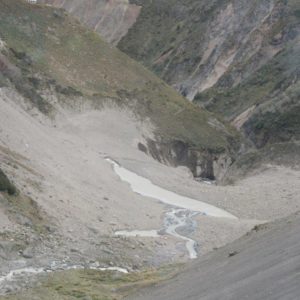FLYSAFE 2019 – Help our Titi fledglings to reach the sea.
Our formerly fluffy chicks have now grown most of their shiny new adult feathers and will put them to the test over the coming 1.5 months when leaving their burrows for the first time to fly out to sea.
Not all of them will be successful and as such the time of the year has come again to be extra vigilant and WATCH OUT FOR CRASHLANDED HUTTON’S SHEARWATERS in and around Kaikoura.
To support and facilitate the rescue of birds on the ground, this year’s FlySafe Campaign will run from 1st March to 7th April 2019.
The HUTTON’S HUB at 115 Ludstone Road (next to DOC office) is open 24/7 to receive rescued birds. From here they will be examined and safely released.
For queries or assistance, you can ring our dedicated trustee Nicky McArthur (021 351 355) who is happy to help.
Please find more information on how you can support FlySafe on our info poster here.
Read up on further details and background info under our Crash Landings / Fallout tab here.
Become an active supporter of FlySafe by joining this year’s Volunteer Workforce. If you want to:
- Raise public awareness of this annual occurrence throughout your community,
- Help out on night patrols as part of one of our Rescue and Release teams,
- Get involved in collecting useful scientific data about the Titi that crashland in Kaikoura,
- Be part of our Hutton’s Hub monitoring team,
you can register your interest here.

